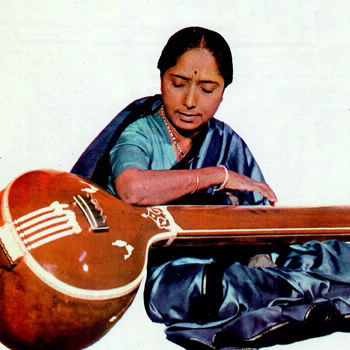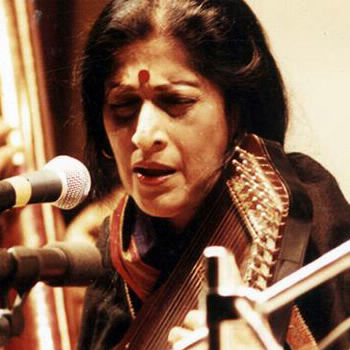
Girija Devi
Born in the musical city of Varanasi in 1929, Girija Devi’s early musical training commenced at the tender age of five under Pandit Sarju Prasad Misra. Later, she received advanced training for several years under Pandit Sri Chandra Misra from whom she imbibed a rich repertoire of Khayals, Gul, Naksh, Prabandhas, Tappas, Tap-Khayals, Bhajans and Thumris. To these, she added Dadras, Kajris, Chaitis and Jhoolas and other varieties of the music of Uttar Pradesh through her research and efforts. Today, she is considered the foremost exponent of the Punjab ‘ang’ light classical music.
Girija’s pleasing personality, aesthetic presentation of classical as well as light classical varieties, her versatile repertoire, and her richly timbered and widely ranged voice are the main factors for her country-wide popularity. Although light classical is considered to be her forte, Girija Devi is equally in her element in Khayal-singing.






